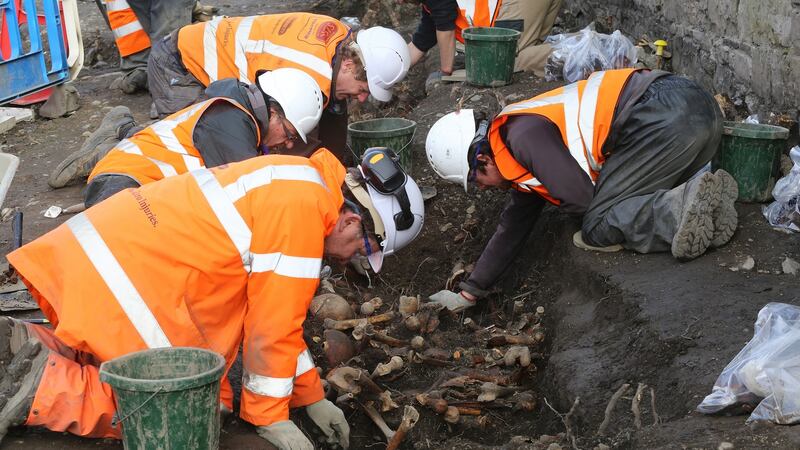The discovery of a 19th century cholera graveyard in Grangegorman and the decline of Dublin's trams following the 1916 Rising will be highlighted at a seminar in Dublin to mark Heritage Week.
Road Rail and Rebellion, organised by Transport Infrastructure Ireland (TII), will also explore the removal of statues in Dublin city centre over the last century and the "reconstruction" of the War of Independence on the N22 in Cork.
Last summer, the bones of victims of a cholera epidemic in the 1830s were uncovered as part of preparation works for the Luas cross-city line at the Broadstone bus garage, close the new DIT (Dublin Institute of Technology) campus at Grangegorman.

Cholera suffers were treated at the Richmond Penitentiary, on Grangegorman Lower, from April to December in 1832. The dead were buried within the grounds of the penitentiary and remained undisturbed until the 1870s, when the site was sold to the Midland Great Western Railway to facilitate expansion of their railway line.
During their redevelopment of the site the company exposed the remains of over 1,700 individuals, which it reinterred beneath a narrow laneway used at the time to provide access from Grangegorman Lower to the company’s lands.
The current redevelopment of the laneway during Luas Cross City works has led to the excavation of the remains of these individuals.
Project archaeologist for Luas Cross City, Emer Dennehy, will explain the background to the cholera epidemic and the city’s institutional response. She will also outline the results of the archaeological excavation of the cholera cemetery and proposals for future analysis.
Dublin tram system
The seminar on Thursday will hear from interpretive planner Pádraig Clancy on the role of the Dublin tram system in 1916 and its decline after the foundation of the State.
Dublin in 1916 had an extensive tram system which traversed the city centre and linked the main train stations and suburbs with the business and administrative centres of the city. This made trams one of the key modes of transport for Dubliners.
Mr Clancy will explore the accounts of those active in the events of 1916 and their usage of the tram network as a means of transportation and distribution during the Rising.
Monuments
In 1916, between St Stephen’s Green and the top of Sackville Street, now O’Connell Street, there were eight monuments celebrating and commemorating the great deeds of kings, queens and soldiers of the empire.
Fighting for position with these figures of the establishment, statues of Irish patriots and visionaries also emerged. Meanwhile, quietly holding their ground were other statues and monuments highlighting the achievements of poets, writers and social crusaders.
Donncha Ó Dúlaing, contracts manager for Luas Cross City, will describe how, over the 50 years following the Rising, almost all of the monuments of monarchs and soldiers had either been removed or destroyed, while new symbols of political and cultural independence were beginning to emerge.
The presentation will explore the destruction of statues of King George II and King William III, the removal of Queen Victoria and King George I and the destruction of Nelson’s Pillar, as well as he more recent removal of statues to facilitate the Luas works, and the plans for their reinstatement.
Finally, Faith Bailey of archaeological consultancy IAC Ltd will present a paper on a War of Independence ambush site at Coolnacaharragh on the N22 in Co Cork, where she has reconstructed the events from documentary sources and witness statements from the archives of the IRA and British Army.
This seminar will be held in the City Wall Space, Wood Quay Venue, in the Dublin Civic Offices on Thursday.









